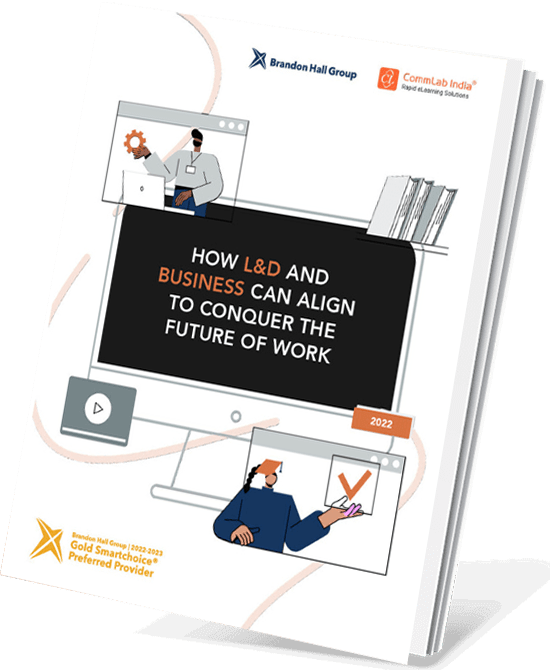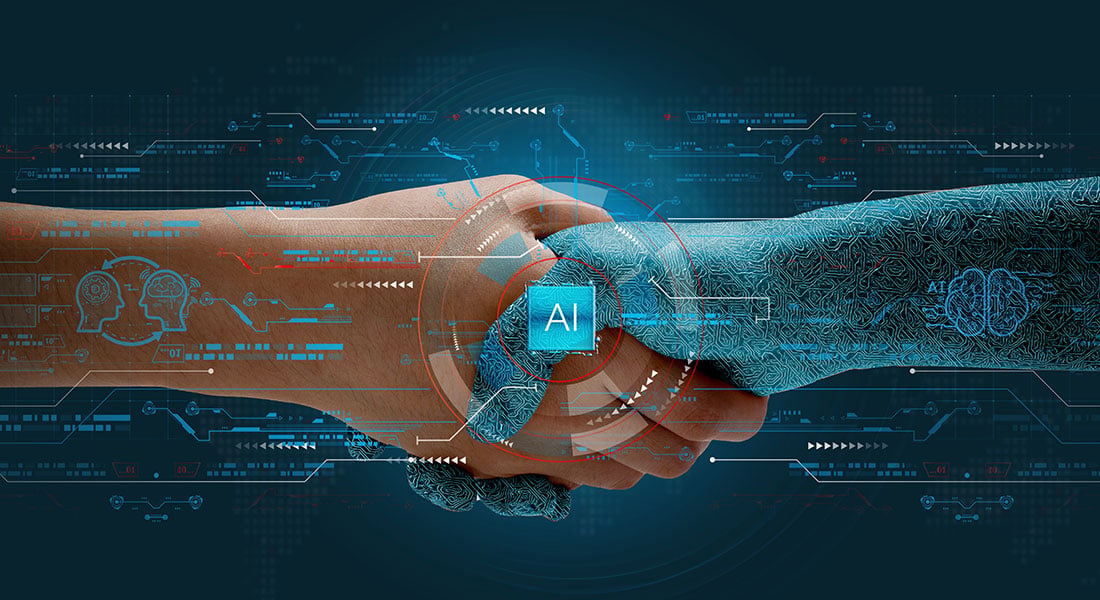How Can L&D Managers Ensure Training Appeals to a Multigenerational Workforce?

In the vibrant tapestry of the modern workplace, generations intertwine, each with its own distinct learning style and preferences. For L&D managers, the challenge isn't merely to train employees but to craft training experiences that resonate with the diverse needs of a multigenerational workforce. Imagine a training session where Baby Boomers, accustomed to structured classrooms, feel overwhelmed by the interactive nature of a gamified learning experience designed for Gen Z. Or picture Millennials, who thrive on collaboration and feedback, struggling to engage with a self-paced online course that lacks opportunities for peer interaction. These scenarios underscore the complexities of designing training programs that cater to everyone.
To navigate this multifaceted landscape, L&D managers must go beyond one-size-fits-all approaches and embrace a nuanced understanding of generational differences. By recognizing the unique learning preferences and needs of each generation, L&D professionals can create training programs that are engaging, effective, and inclusive.
In this blog post, we will explore the key learning preferences of different generations, discuss strategies for inclusive learning design, and provide practical tips for implementing effective training programs for a multigenerational workforce.
→ Download eBook: How L&D And Business Can Align to Conquer The Future Of Work
Table of Contents
- What Are the Key Learning Preferences of Different Generations in the Workforce?
- How Can L&D Managers Move Beyond Simply Catering to Preferences and Create Truly Inclusive Training Experiences?
- What Are the Different Learning Strategies and Formats L&D Managers Can Leverage for a Multigenerational Workforce?
- What Additional Factors Should L&D Managers Consider When Designing Training for a Multigenerational Workforce?
What Are the Key Learning Preferences of Different Generations in the Workforce?
The modern workforce is a vibrant tapestry woven from diverse generations, each with unique preferences and learning styles. To create effective training programs, L&D managers must understand the distinct characteristics of each generation and tailor their approaches accordingly.
1. Baby Boomers (Born between 1946 and 1964)
Learning Preferences:
Baby Boomers often prefer traditional, structured learning environments. They value face-to-face interactions, instructor-led training, and tangible resources. They are accustomed to hierarchical learning structures and appreciate clear guidelines and expectations.
While Baby Boomers may initially be resistant to new technologies, they are often open to learning if the benefits are clear. Many Baby Boomers are lifelong learners who are motivated by professional development and personal growth. They may also appreciate training programs that align with their values and experiences.
2. Generation X (Born between 1965 and 1980)
Learning Preferences:
Gen Xers are independent learners who appreciate flexibility and self-paced training. They are often comfortable with technology and may prefer blended learning approaches that combine traditional classroom instruction with online modules. They value practical applications and real-world examples.
Gen Xers are known for their resourcefulness and adaptability. They may be skeptical of authority and prefer to learn from experience. They are often motivated by opportunities for professional advancement and personal growth. They may also appreciate training programs that are relevant to their career goals and interests.
3. Millennials (Born between 1981 and 1996)
Learning Preferences:
Millennials are digital natives who are comfortable with technology and prefer interactive, engaging learning experiences. They value collaboration, feedback, and opportunities for personal growth. They are often motivated by intrinsic rewards and may be more likely to seek out learning opportunities that align with their interests and values.
Millennials are known for their creativity, diversity, and entrepreneurial spirit. They are often more idealistic and socially conscious than previous generations. They are also more likely to be motivated by opportunities for personal and professional growth. Millennials may appreciate training programs that are relevant to their career goals, but they may also be interested in learning about social issues and making a positive impact on the world.
4. Generation Z (Born after 1997)
Learning Preferences:
Gen Zers are highly adaptable and tech-savvy. They thrive on personalized learning experiences and value instant gratification. They are more likely to prefer short, engaging content formats like microlearning and gamification. They are also more likely to seek out learning opportunities that are relevant to their personal and professional goals.
Gen Zers are known for their diversity, global mindset, and entrepreneurial spirit. They are often more socially conscious and environmentally aware than previous generations. They are also more likely to be motivated by opportunities for personal and professional growth. Gen Zers may appreciate training programs that are relevant to their career goals, but they may also be interested in learning about social issues and making a positive impact on the world. They may also prefer training programs that are visually appealing and easy to navigate.
By recognizing the distinct learning styles of different generations, L&D managers can develop training programs that are more effective and engaging, addressing the varied needs of their workforce.
How Can L&D Managers Move Beyond Simply Catering to Preferences and Create Truly Inclusive Training Experiences?
While understanding generational preferences is crucial, it's equally important to create training experiences that are inclusive and accessible to everyone. L&D managers should move beyond simply catering to preferences and adopt a multi-pronged approach that considers both style and delivery format.
One effective strategy is to embrace blended learning, which combines various learning methods to cater to different needs. By incorporating a mix of traditional classroom instruction, online modules, self-paced learning, and social learning activities, L&D managers can create a more engaging and inclusive learning experience.
For example, a blended learning approach might involve:
- Instructor-led workshops to provide hands-on training and facilitate group discussions.
- Online modules that allow learners to work at their own pace and access content from anywhere.
- Self-paced learning activities such as reading assignments, case studies, or simulations.
- Social learning opportunities like online forums, mentoring programs, or collaborative projects.
By combining these different elements, L&D managers can create a more personalized and engaging learning experience that meets the needs of a diverse workforce.
What Strategies Should L&D Managers Follow for Inclusive Learning Design?
Here are the key strategies for inclusive learning:
- Accessibility: Ensure that training materials and resources are accessible to all learners, regardless of their abilities. This may involve providing alternative formats, such as audio or braille, or using assistive technologies.
- Microlearning: Break down content into small, digestible chunks to cater to short attention spans and busy schedules.
- Mobile-friendly design: Make training materials accessible on mobile devices to accommodate learners who prefer to learn on the go.
- Personalized learning: Tailor training to individual needs and preferences. This may involve using adaptive learning platforms, allowing learners to choose their own learning paths, or providing personalized feedback and coaching.
- Inclusive language: Use inclusive language and avoid stereotypes or biases in training materials.
By adopting a multi-pronged approach that considers both style and delivery format, L&D managers can create training experiences that are inclusive, engaging, and effective for a diverse workforce.
What Are the Different Learning Strategies and Formats L&D Managers Can Leverage for a Multigenerational Workforce?
1. Self-Paced Learning
Self-paced learning offers significant benefits for learners and organizations alike. It allows individuals to learn at their own pace, accommodating different learning styles and schedules. This flexibility can be particularly valuable for busy professionals who need to balance work and personal commitments.
Benefits of Self-Paced Learning:
- Flexibility: Learners can choose when and where to study, allowing them to fit learning into their busy schedules.
- Personalized Learning: Self-paced learning can be tailored to individual needs and preferences, making the learning experience more engaging and effective.
- Increased Engagement: Learners who have control over their learning are often more motivated and engaged.
- Reduced Costs: Self-paced learning can be more cost-effective than traditional classroom-based training, as it eliminates the need for physical facilities and instructors.
Drawbacks of Self-Paced Learning:
- Potential for Disengagement: Learners may struggle to stay motivated and focused without the structure and guidance of an instructor.
- Lack of Social Interaction: Self-paced learning can be isolating, as learners may miss out on opportunities for collaboration and peer-to-peer learning.
- Technical Challenges: Learners may encounter technical difficulties when using online learning platforms or tools.
Examples of Self-Paced Learning Formats:
- Microlearning Modules: Short, focused lessons that can be completed in a few minutes.
- Online Courses: Comprehensive courses that cover a specific topic or skill.
- Video Tutorials: Instructional videos that demonstrate how to perform tasks or skills.
- Interactive Simulations: Virtual environments that allow learners to practice skills in a safe and realistic setting.
Platforms and Tools for Self-Paced Learning:
- Learning Management Systems (LMS): Platforms that can be used to deliver and track online courses and training materials.
- Mobile Apps: Apps that allow learners to access training content on their smartphones or tablets.
- eLearning Authoring Tools: Tools that can be used to create interactive and engaging online courses.

How L&D And Business Can Align to Conquer The Future Of Work
Bridging the Gap Between Organizational and Individual Goals!
- Learning Strategies Shaping the Future
- Changing Role of Learning Professionals
- Learning to Solve Business Challenges
- And More!
When is Self-Paced Learning Most Effective?
Self-paced learning works best for:
- Onboarding new hires: It allows new employees to learn at their own pace and become familiar with company policies and procedures.
- Foundational knowledge acquisition: It can be used to teach basic skills and concepts that are essential for job performance.
- Skill development: Self-paced learning can be used to develop specific skills, such as technical skills or soft skills.
- Continuous learning: It can be used to support ongoing professional development and keep employees up-to-date on industry trends.
By understanding the benefits, drawbacks, and applications of self-paced learning, L&D managers can effectively incorporate this strategy into their training programs to meet the needs of a diverse workforce.
2. Instructor-Led Training
Instructor-led training, while often associated with traditional learning methods, continues to hold significant value in today's workplace. This format provides opportunities for face-to-face interaction, collaboration, and real-time feedback, fostering a more engaging and immersive learning experience.
Value of Instructor-Led Training:
- Fostering Interaction and Application: Instructor-led training allows for direct interaction between learners and an experienced instructor. This can lead to deeper discussions, question-and-answer sessions, and opportunities for learners to apply their knowledge in real-time.
- Building Relationships: In-person interactions can help build relationships between learners and instructors, fostering a sense of community and support.
- Facilitating Collaboration: Group activities and discussions can encourage collaboration among learners, promoting knowledge sharing and problem-solving skills.
- Providing Real-Time Guidance: Instructors can offer immediate feedback and guidance, helping learners to overcome challenges and stay on track.
Engaging Younger Generations:
To make instructor-led training more appealing to younger generations, consider incorporating elements of active learning and group work. These strategies can help to break up long lectures and make the learning experience more interactive and engaging.
Some examples of active learning activities include:
- Case studies: Present real-world scenarios and ask learners to analyze and solve problems. Here’s a case study to explore: A Sales & Service Training Case Study for a Manufacturing Major.
- Role-playing: Have learners act out different roles in a simulated situation.
- Group projects: Assign learners to work together on a project or presentation.
- Games and simulations: Use games and simulations to make learning fun and engaging.
By incorporating these elements, L&D managers can create instructor-led training sessions that are more relevant and engaging for younger generations.

When is Instructor-Led Training the Best Choice?
Instructor-led training is particularly effective for:
- Soft skills development: Skills such as communication, teamwork, and leadership are often best taught in a face-to-face setting.
- Complex topics: Instructor-led training can provide in-depth explanations and guidance on complex topics that may be difficult to understand through self-paced learning.
- Building a sense of community: Instructor-led training can help to foster a sense of belonging and connection among learners.
- Providing real-time feedback: Instructors can offer immediate feedback and guidance, helping learners to overcome challenges and stay on track.
While self-paced learning has its advantages, instructor-led training remains a valuable tool for L&D managers. By incorporating elements of active learning and group work, and by carefully considering when this format is most appropriate, L&D managers can create engaging and effective training experiences for a diverse workforce.
3. Social and Collaborative Learning
Social and collaborative learning offers numerous benefits for learners and organizations alike. By fostering knowledge sharing, peer-to-peer support, and a sense of community, social learning can enhance the effectiveness of training programs and improve employee engagement.
Benefits of Social Learning:
- Knowledge Sharing: Social learning creates opportunities for learners to share their knowledge and experiences with others. This can help to identify gaps in understanding, promote best practices, and foster a culture of continuous learning.
- Peer-to-Peer Support: Learners can receive support and encouragement from their peers, building confidence and motivation.
- Building Relationships: Social learning can help to build relationships among learners, fostering a sense of community and belonging.
- Problem-Solving: Working together on collaborative projects can help learners to develop problem-solving skills and learn from each other's strengths and weaknesses.
Creating a Safe and Encouraging Environment:
To maximize the benefits of social learning, it is essential to create a safe and encouraging environment where learners feel comfortable sharing their thoughts and ideas. This can be achieved by:
- Establishing clear guidelines and expectations: Clearly communicate the expectations for participation and behavior in social learning activities.
- Promoting respect and inclusivity: Foster a culture of respect and inclusivity where everyone feels valued and welcome.
- Encouraging open communication: Encourage learners to share their thoughts and ideas without fear of judgment or criticism.
- Providing support and guidance: Offer support and guidance to learners who may be struggling or feeling overwhelmed.
When is Social Learning the Best Choice?
Social learning can be integrated into various training formats to enhance the learning experience. Some examples include:
- Online discussions: Facilitate online discussions following self-paced modules to allow learners to share their thoughts and questions.
- Group projects: Assign learners to work together on collaborative projects within instructor-led sessions.
- Mentoring programs: Pair learners with mentors who can provide guidance, support, and advice.
- Knowledge-sharing communities: Create online communities where learners can connect, share resources, and collaborate on projects.
By incorporating social learning into their training programs, L&D managers can create a more engaging, effective, and inclusive learning experience for their workforce.
4. Gamification
Gamification, the application of game-like elements to non-game contexts, has gained popularity in recent years as a strategy to motivate learners and increase engagement. By incorporating elements such as points, badges, leaderboards, and challenges, gamification can create a more enjoyable and rewarding learning experience.
Benefits of Gamification:
- Increased Motivation: Gamification can make learning more fun and engaging, motivating learners to participate and achieve their goals.
- Enhanced Engagement: By providing learners with immediate feedback and rewards, gamification can increase their sense of accomplishment and satisfaction.
- Improved Retention: Gamification can help learners to better retain information by making the learning experience more memorable.
- Enhanced Collaboration: Gamification can encourage collaboration and teamwork among learners, fostering a sense of community and support.
Aligning Gamification with Learning Objectives:
To avoid a superficial experience, it is essential to align gamification elements with the learning objectives of the training program. Gamification should not be used simply as a gimmick but rather as a tool to reinforce key concepts and skills.
For example, if the goal of a training program is to improve problem-solving skills, gamification elements could include challenges that require learners to solve complex problems. Similarly, if the goal is to encourage participation in self-paced modules, gamification elements could include points or badges for completing modules or achieving certain milestones.
When is Gamification the Best Choice?
Gamification can be effectively incorporated into a variety of training programs, including:
- Reinforcing key skills: Gamification can be used to reinforce important skills and knowledge, such as technical skills or soft skills.
- Encouraging participation in self-paced modules: Gamification can motivate learners to complete self-paced modules by providing rewards for progress and achievement.
- Promoting teamwork and collaboration: Gamification can encourage learners to work together on team-based challenges, promoting teamwork and collaboration.
- Providing feedback and recognition: Gamification can provide learners with immediate feedback and recognition for their achievements, boosting their confidence and motivation.

By carefully considering the learning objectives and selecting appropriate gamification elements, L&D managers can create engaging and effective training programs that motivate learners and improve outcomes.

How L&D And Business Can Align to Conquer The Future Of Work
Bridging the Gap Between Organizational and Individual Goals!
- Learning Strategies Shaping the Future
- Changing Role of Learning Professionals
- Learning to Solve Business Challenges
- And More!
What Additional Factors Should L&D Managers Consider When Designing Training for a Multigenerational Workforce?
In addition to the strategies discussed above, L&D managers should also consider the following factors when designing training for a multigenerational workforce:
Accessibility:
- Ensure that training materials and resources are accessible to all learners, regardless of their abilities. This may involve providing alternative formats, such as audio or braille, or using assistive technologies.
- Consider the physical accessibility of training locations, ensuring that they are accessible to learners with disabilities.
- Provide accommodations for learners with disabilities, such as extended time for exams or the use of assistive technology.
Microlearning:
- Break down content into small, digestible chunks to cater to short attention spans and busy schedules.
- Microlearning can be particularly effective for Gen Z and Millennials, who are accustomed to consuming information in short bursts.
- Examples of microlearning formats include videos, podcasts, infographics, and interactive quizzes.
Mobile-Friendly Design:
- Make training materials accessible on mobile devices to accommodate learners who prefer to learn on the go.
- Consider using responsive design to ensure that training materials are optimized for different screen sizes and devices.
- Provide mobile apps or other tools that allow learners to access training content from their smartphones or tablets.
Assessment and Feedback:
- Incorporate a variety of assessment methods to cater to different learning styles. This may include written exams, practical assessments, simulations, or group projects.
- Provide ongoing feedback to learners to help them track their progress and identify areas for improvement.
- Use a variety of feedback methods, such as written feedback, one-on-one meetings, or peer feedback.
How to Create Mobile Learning for Performance Support Effectively?
By considering these additional factors, L&D managers can create training programs that are more inclusive, effective, and engaging for a diverse workforce.
Wrapping Up
In today's multigenerational workforce, accommodating diverse learning styles is essential for creating effective and engaging training programs. By understanding the unique preferences and needs of each generation, L&D managers can design training experiences that resonate with everyone.
A multi-pronged approach that combines various strategies and formats is key to catering to the diverse needs of a multigenerational workforce. By incorporating self-paced learning, instructor-led training, social and collaborative learning, and gamification, L&D managers can create a more engaging and inclusive learning experience.
It is important for L&D managers to continuously assess and improve their training programs to ensure they remain effective in a dynamic learning landscape. By gathering feedback from learners, monitoring training outcomes, and staying up-to-date on industry trends, L&D managers can make informed decisions about how to adapt their training programs to meet the evolving needs of their workforce.
To learn more about how L&D and business can align to conquer the future of work, download our free eBook, "How L&D And Business Can Align to Conquer The Future Of Work." This eBook provides valuable insights and practical strategies for creating effective training programs that meet the needs of a multigenerational workforce.




![5 Sure Shot Tips to Ace Customized Training [Infographic]](https://blog.commlabindia.com/hubfs/customized-training-tips-infographic.jpg)
